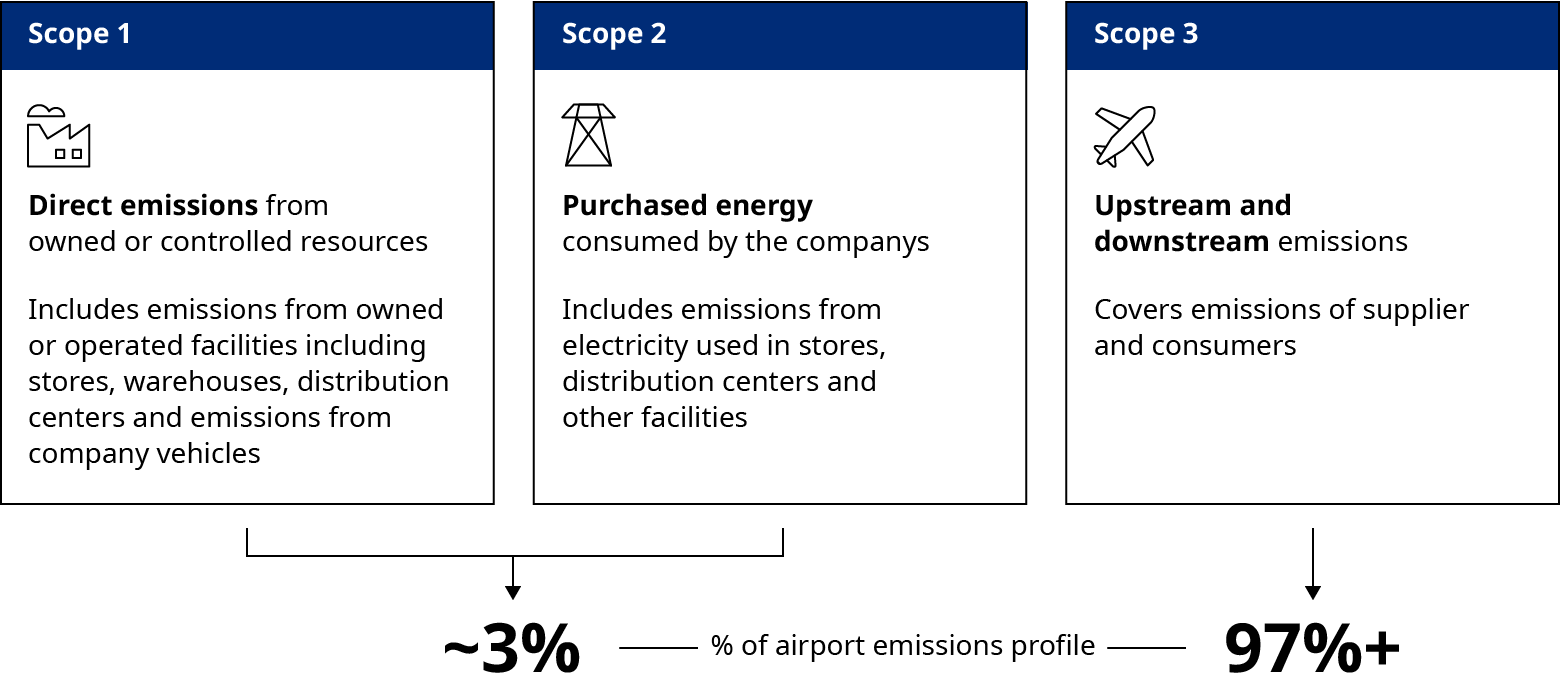Airports around the world are already in the process of modernizing and upgrading infrastructure. In the United States alone, as much as $150 billion is expected to be spent on airport infrastructure projects between 2023 and 2027. As part of that effort, airports must also begin to decarbonize if they are to help the aviation industry reach net zero by 2050 and, in some regions, be compliant with regulation.
Failure to make tangible strides in decarbonization may ultimately hinder airports’ ability to secure conventional financial backing, as more financial institutions and investors begin to insist on credible transition plans from their investments. With the implementation of the Corporate Sustainability Reporting Directive, many in the European Union will be mandated to disclose 2024 Scope 1, 2, and 3 emissions, along with specific reduction targets, starting in 2025.
Addressing Scope 1 and 2 emissions is within airports' reach as they apply to those being generated by airport operations, such as emissions from airport trucks, buses, and cars, and those purchased by airports from power suppliers. Dealing with significant Scope 3 emissions — which constitute nearly 97% of the overall emissions profile of airports — poses a greater challenge as they fall outside of an airport’s control. The majority represent airlines burning kerosene-based jet fuel during landing and takeoff, and there, airports can only incentivize and facilitate a switch to sustainable aviation fuel.
The path to decarbonization begins with a carefully crafted plan and targets aligned with the Paris Agreement. This is where the toolkit report acts as a comprehensive guide.

Developed by the World Economic Forum in partnership with Oliver Wyman, Airport Council International World, and airport infrastructure management company Mundys, the toolkit outlines short-term, midterm, and long-term actions for airports embarking on their decarbonization journey. It strategically maps out financing options, including commercial loans, development bank loans/grants, and sustainability-linked finance, based on airport size and regional governance policies.
The toolkit also includes case studies of airports successfully utilizing various financing instruments to fund diverse decarbonization projects. These case studies provide valuable insights into what are likely to become best practices for how to mobilize capital for emissions reductions.


